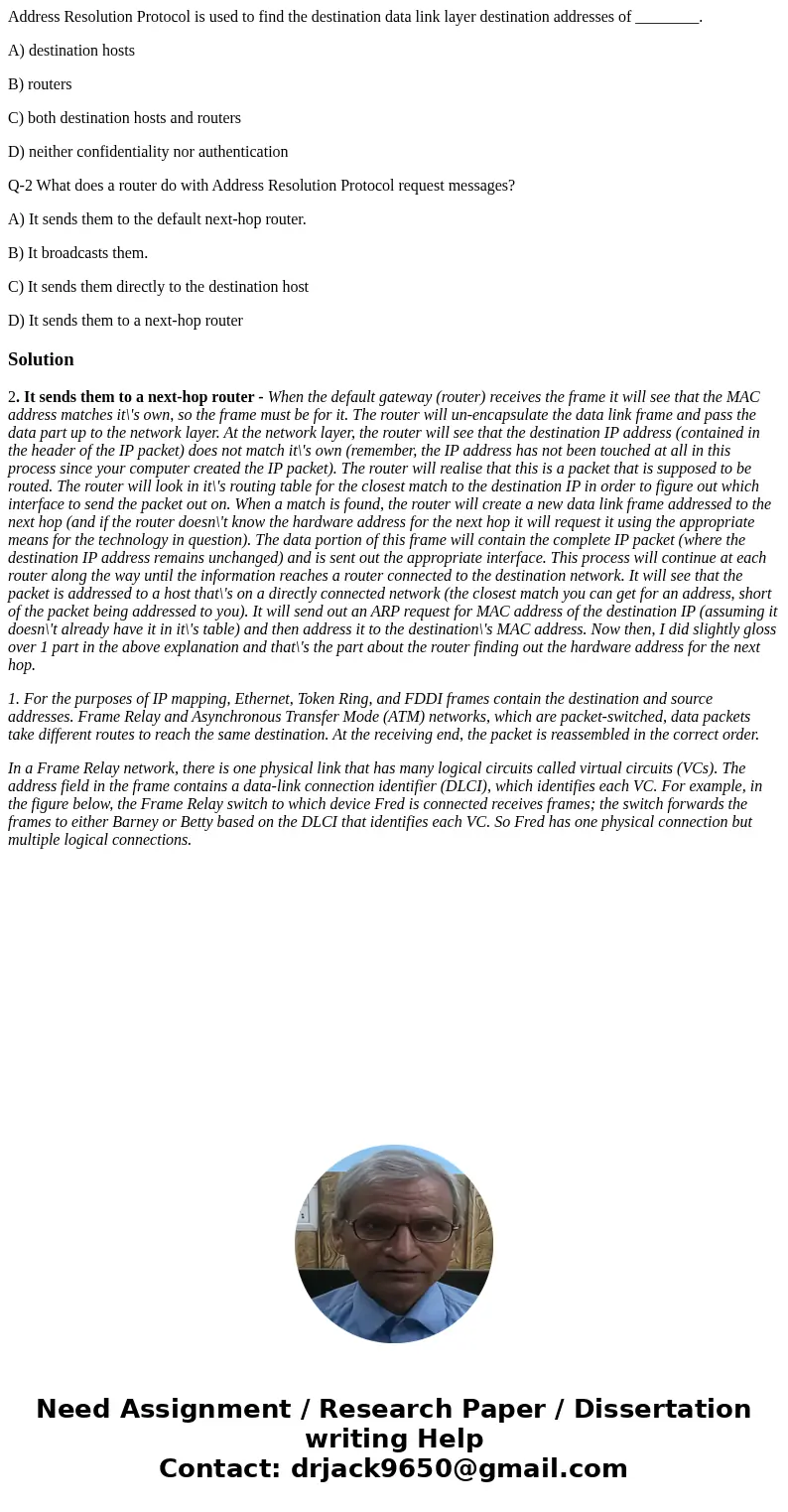Address Resolution Protocol is used to find the destination
Address Resolution Protocol is used to find the destination data link layer destination addresses of ________.
A) destination hosts
B) routers
C) both destination hosts and routers
D) neither confidentiality nor authentication
Q-2 What does a router do with Address Resolution Protocol request messages?
A) It sends them to the default next-hop router.
B) It broadcasts them.
C) It sends them directly to the destination host
D) It sends them to a next-hop router
Solution
2. It sends them to a next-hop router - When the default gateway (router) receives the frame it will see that the MAC address matches it\'s own, so the frame must be for it. The router will un-encapsulate the data link frame and pass the data part up to the network layer. At the network layer, the router will see that the destination IP address (contained in the header of the IP packet) does not match it\'s own (remember, the IP address has not been touched at all in this process since your computer created the IP packet). The router will realise that this is a packet that is supposed to be routed. The router will look in it\'s routing table for the closest match to the destination IP in order to figure out which interface to send the packet out on. When a match is found, the router will create a new data link frame addressed to the next hop (and if the router doesn\'t know the hardware address for the next hop it will request it using the appropriate means for the technology in question). The data portion of this frame will contain the complete IP packet (where the destination IP address remains unchanged) and is sent out the appropriate interface. This process will continue at each router along the way until the information reaches a router connected to the destination network. It will see that the packet is addressed to a host that\'s on a directly connected network (the closest match you can get for an address, short of the packet being addressed to you). It will send out an ARP request for MAC address of the destination IP (assuming it doesn\'t already have it in it\'s table) and then address it to the destination\'s MAC address. Now then, I did slightly gloss over 1 part in the above explanation and that\'s the part about the router finding out the hardware address for the next hop.
1. For the purposes of IP mapping, Ethernet, Token Ring, and FDDI frames contain the destination and source addresses. Frame Relay and Asynchronous Transfer Mode (ATM) networks, which are packet-switched, data packets take different routes to reach the same destination. At the receiving end, the packet is reassembled in the correct order.
In a Frame Relay network, there is one physical link that has many logical circuits called virtual circuits (VCs). The address field in the frame contains a data-link connection identifier (DLCI), which identifies each VC. For example, in the figure below, the Frame Relay switch to which device Fred is connected receives frames; the switch forwards the frames to either Barney or Betty based on the DLCI that identifies each VC. So Fred has one physical connection but multiple logical connections.

 Homework Sourse
Homework Sourse